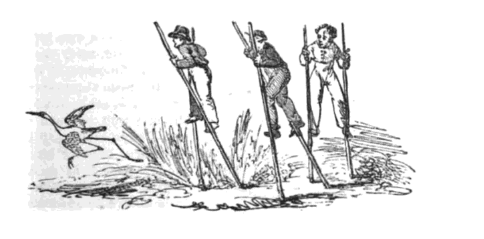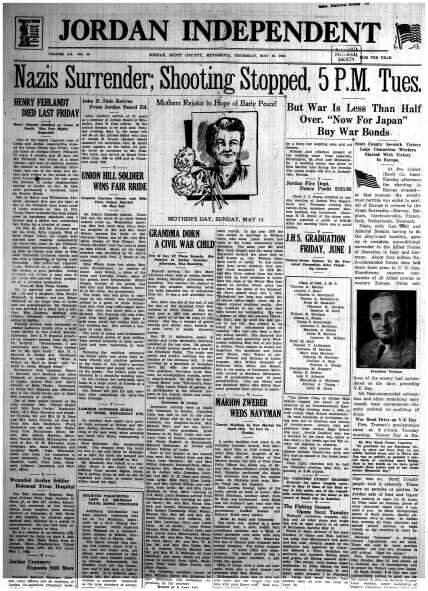June 13th marked the launch of our summer 2019 series of free mini-camps and craft workshops at libraries throughout Scott County. This program, funded by the Minnesota Arts and Cultural Heritage (Legacy) Amendment, allows us to bring fun engaging history activities to the young people of Scott County during their summer vacation.
This year our theme is GAMES. Participants in our “I’m Game” craft program will learn a bit about how fun in the past differed from today, and then try their hand at making a kite, or a hoop and stick toy.
Older kids, up for a greater challenge, can register for a “Game On” mini-camp! There, they will get to make a hoop and stick toy, use scavenged materials to invent their own games, and try their hand at historic stilts, hoops and graces games outside.
The kids who participate in these programs are quick to share their knowledge about how the lives of kids in Scott County 150 years ago were different from their lives today. They mention technology, a lack of video games, and the fact that houses didn’t have air conditioning (leading kids to want to play outside more). It was also a bit harder to get the variety of amusements in 1869 that are available today. Towns certainly had shops, and it was possible to order things by mail, but the selection was a bit different, and it took quite a bit longer for your packages to arrive. Children were likely encouraged to create their own toys and games.
That being said, kids still had fun, and, just like today’s big ticket items, there were games and toys that kids across the United States (and other nations) enjoyed. Three of those games- stilts, hoops and graces- are available to try by participants in our mini-camps. We will also be bringing them along with the Scott County Library Readmobile, and to fairs and festivals around the county this summer. Below, see what children’s literature of the past said about these three popular pastimes:
“Up In The Air On Stilts”, from The American Boy’s Book of Sport: Outdoor Games For All Seasons by Daniel Carter Beard Published 1896
“According to the newspapers, walking on stilts is the very latest fashionable amusement for the ‘new woman’ in London. It is safe to say that before long you boys will be called on to make stilts for your sisters. There can be little doubt that a time is coming when a book written for boys will be the one girls will read, or rather, every book will be written for young people will be addressed to both boys and girls. Just why girls should not walk on stilts or engage in any similar sport no one has yet given a satisfactory answer. Twenty five years ago the boys used to make stilts with very low blocks for their sisters and the girls would seldom use them, but insisted on using their brothers’ high blocked stilts.
One bright boy on Fourth Avenue, New York City, has made a pair of stilts out of old laths from the ruins of some dismantled house. Three laths nailed together form each stilt pole, and the blocks are made of a graduated lot of lath pieces nailed together. Now, if a small boy in the tenement district can make himself a good serviceable pair of stilts out of some old laths, there can be no doubt that the boys who read this book will be able to find the material and tools to build themselves beautiful gadabouts”
“The Game of Graces”, Lydia Marie Child’s The Girls Own Book, published 1838
“This is a new game, common in Germany, but introduced to this country from France. It derives its name from the graceful attitudes which it occasions. Two sticks are held in the hands, across each other, like open scissors: the object is to throw and catch a small hoop upon these sticks. The hoop to be bound with silk, or ribbon, according to fancy. The game is played by two persons. The sticks are held straight, about four inches apart, when trying to catch the hoop; and when the hoop is thrown, they are crossed like a pair of scissors. In this country it is called The Graces or The Flying Circle.”
A side note- author Lydia Marie Child is fascinating in her own right! Learn more about here here.
“The Hoop”, from The American Boy’s Book of Sport: Outdoor Games For All Seasons by Daniel Carter Beard Published 1896
“Everybody knows how to roll the hoop in the usual way. There is no horse, however trained, that obeys the hands of the rider with such precision. There is no ship, with the best pilot, which so correctly follows the guidance of its rudder. Here is a hoop, ruled by a stick, which maneuvers and drives it over the ground in all directions- to the right, to the left, straight on, backward, forward, describing a curve, a broken line, a triangle or, in a word, all the series of geometrical figures. Many players can contest with their hoops, and challenge each other, to know who shall drive his hoop the longest time without getting out of breath, or who shall be the first to reach a goal agreed on. In this latter case, all the players taking part in the contest should stand together on the same line, and start at a given signal… The hoop is like the skipping rope, one of the best exercises for giving strength and suppleness to the limbs.”
Are you interested in joining us for any of our historic games programs? See the full schedule below, and contact your local library to register for mini-camps! All programs are free of charge.
I’m Game! Library Crafts:Best for young people aged 6-10 and their families
Shakopee Library: June 13th, 10:30am-11:00am
Prior Lake Library: June 15th, 12:00pm-12:30pm
Jordan Library: June 20th, 10:30am-11:00am
New Prague Library: July 2nd, 10:30am-11:00am
Elko New Market Library: July 3rd, 2:00pm-2:30pm
Savage Library: July 12th, 10:30am-11:00am
Belle Plaine Library: July 16th, 10:30-11:00am
Game On! Library Camps:Best for young people aged 8-12
Savage Library: June 13th, 2:00pm-3:00pm
New Prague Library: Jume 18th, 2:00pm-3:00pm
Belle Plaine Library: June 20th, 2:00pm-3:00pm
Prior Lake Library: July 2nd, 2:00pm-3:00pm
Shakopee Library: July 12th, 2:00pm-3:00pm
Jordan Library: July 16th, 2:00pm-3:00pm
Elko New Market Libray: July 17th, 2:00pm-3:00pm
Written by Rose James, SCHS Program Manger


















